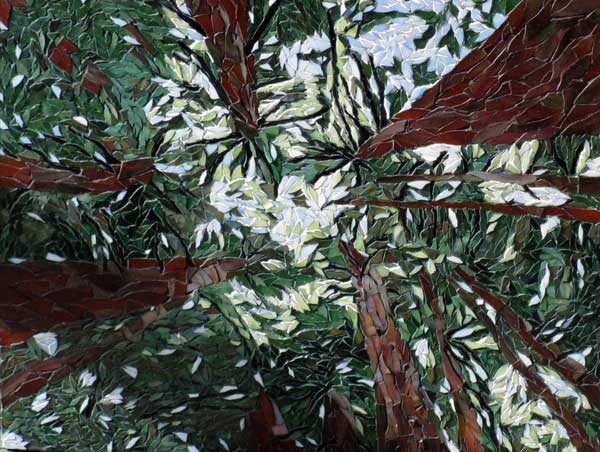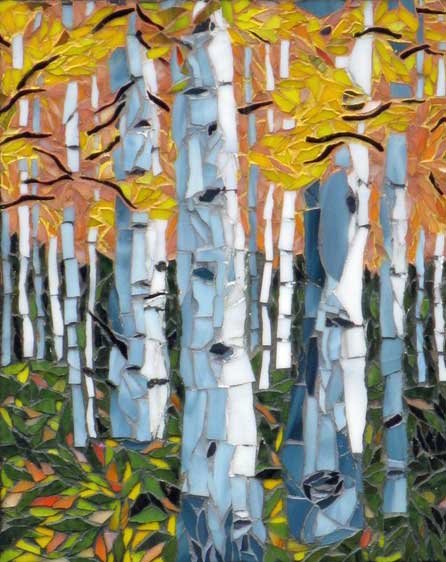In my article Stained Glass Mosaic Art, I explained how stained glass can be cut up into small pieces and used like conventional tesserae or cut larger and used to define entire elements as is done in a stained glass window. In the window mode of working, one single piece of variegated glass is used to render an element, say a tree trunk for example, and whatever shading or detail is provided by the swirls or bands in the glass. Contrast that with conventional mosaic mode, where the shading or detail is built from different pieces of glass, and together they render the tree trunk.
The objection to working in the conventional mosaic mode is that most artists don’t want to lose all the visual interest of the swirls of color by cutting them up. Canadian artist Lorna Ball demonstrates that it is possible to use stained glass cut up into small tiles and not lose the visual interest provided by the variegated colors of the glass.

Note the bark on the trees in the mosaic below. Sure, a single piece of swirled glass could be used for the trunks, but could any swirling no matter how beautiful capture the texture and dimension of the bark facets as well as Ball’s separate slivers of different colors do?

Lorna’s work also demonstrates an important point about using stained glass cut up into small tile: just because the tile is cut up small, it doesn’t have to be cut up into similar shapes and sizes. Notice in the mosaic below how the black tiles in the branches of the trees are completely different in shape and proportion from the white tiles in the tree trunks and from the yellow tiles that render the leaves:

The slender black tiles used for tree branches might make you wonder if the conventional mosaic style and the conventional stained glass style can be hybridized, and the answer is a qualified yes. For example, the above scene would have looked odd if the leaves of the canopy and forest floor were rendered in their tiny tiles and the tree trunks were replaced with single pieces of swirled glass. There has to be stylistic integrity throughout the composition, or the odd element will stick out like a sore thumb. The styles are simply too different. Look at the following mosaic by Natalija Moss as a reminder of how different these two stylistic modes are:

What if the blue strips of the background were rendered in smaller blue tiles in a conventional mosaic manner? Could the face still be composed from large pieces? No, the background would have more visual detail than the figure in the foreground, which is the exact opposite of what is needed to make the figure stand out from the background.

Leave a Reply